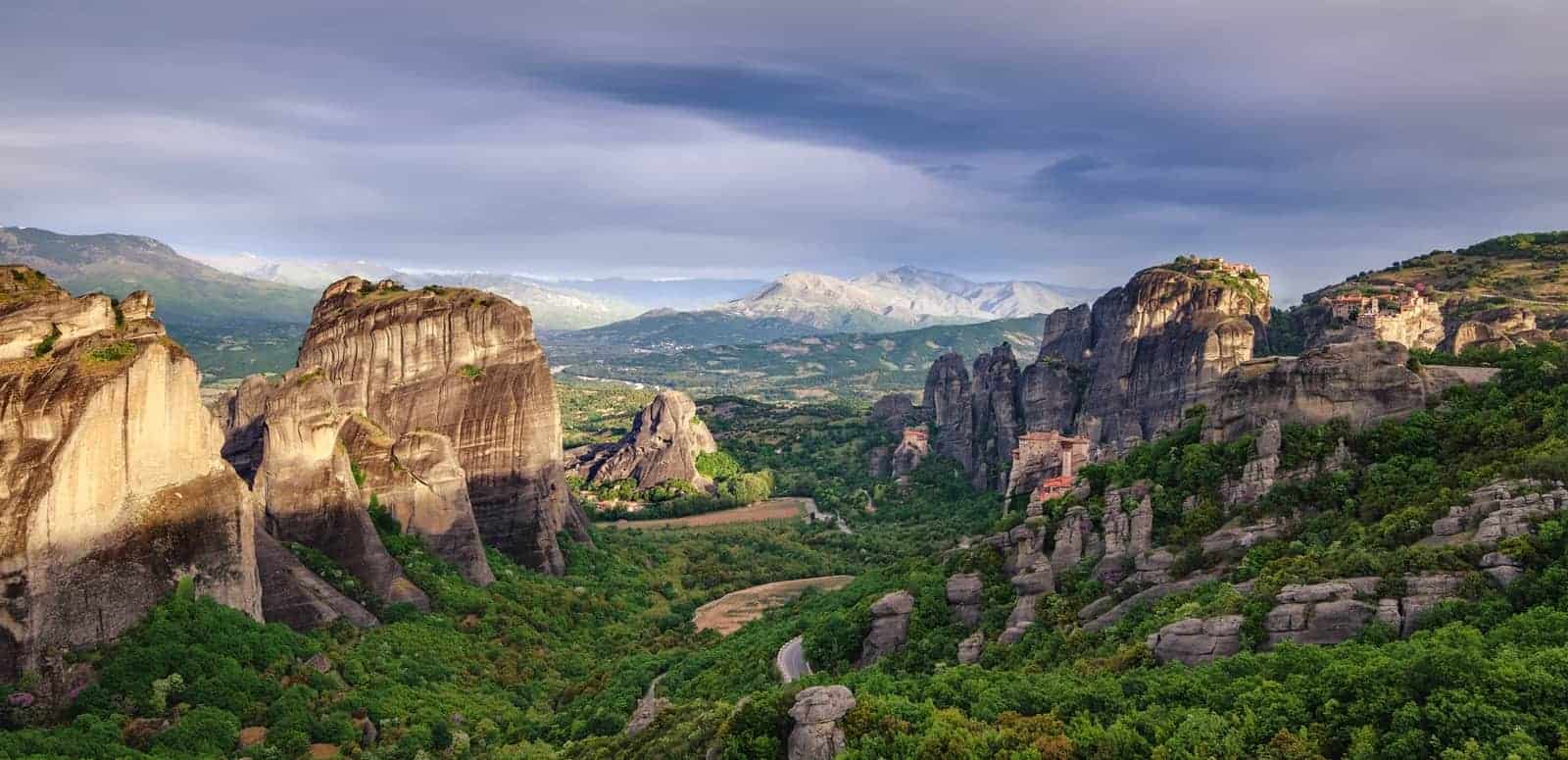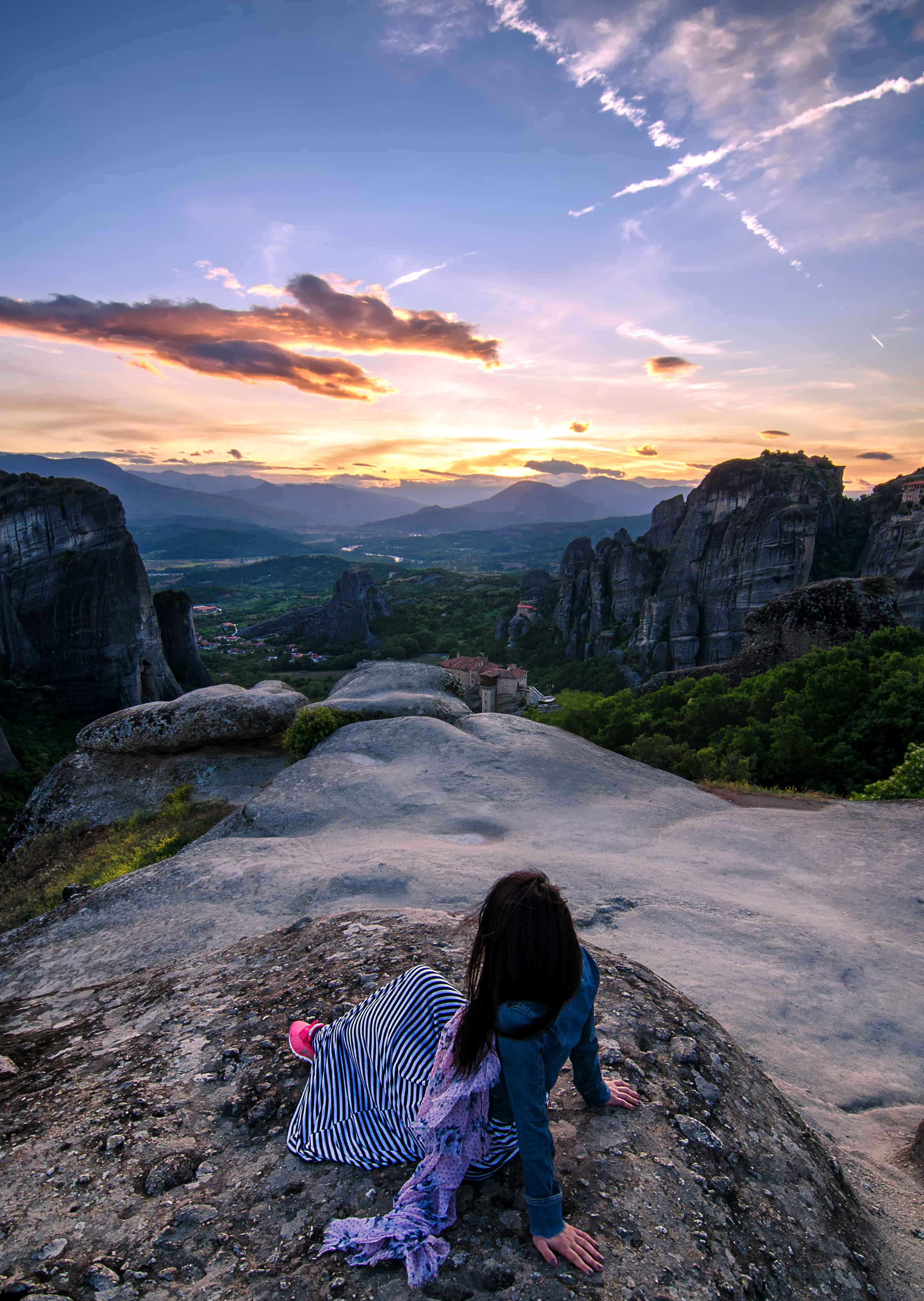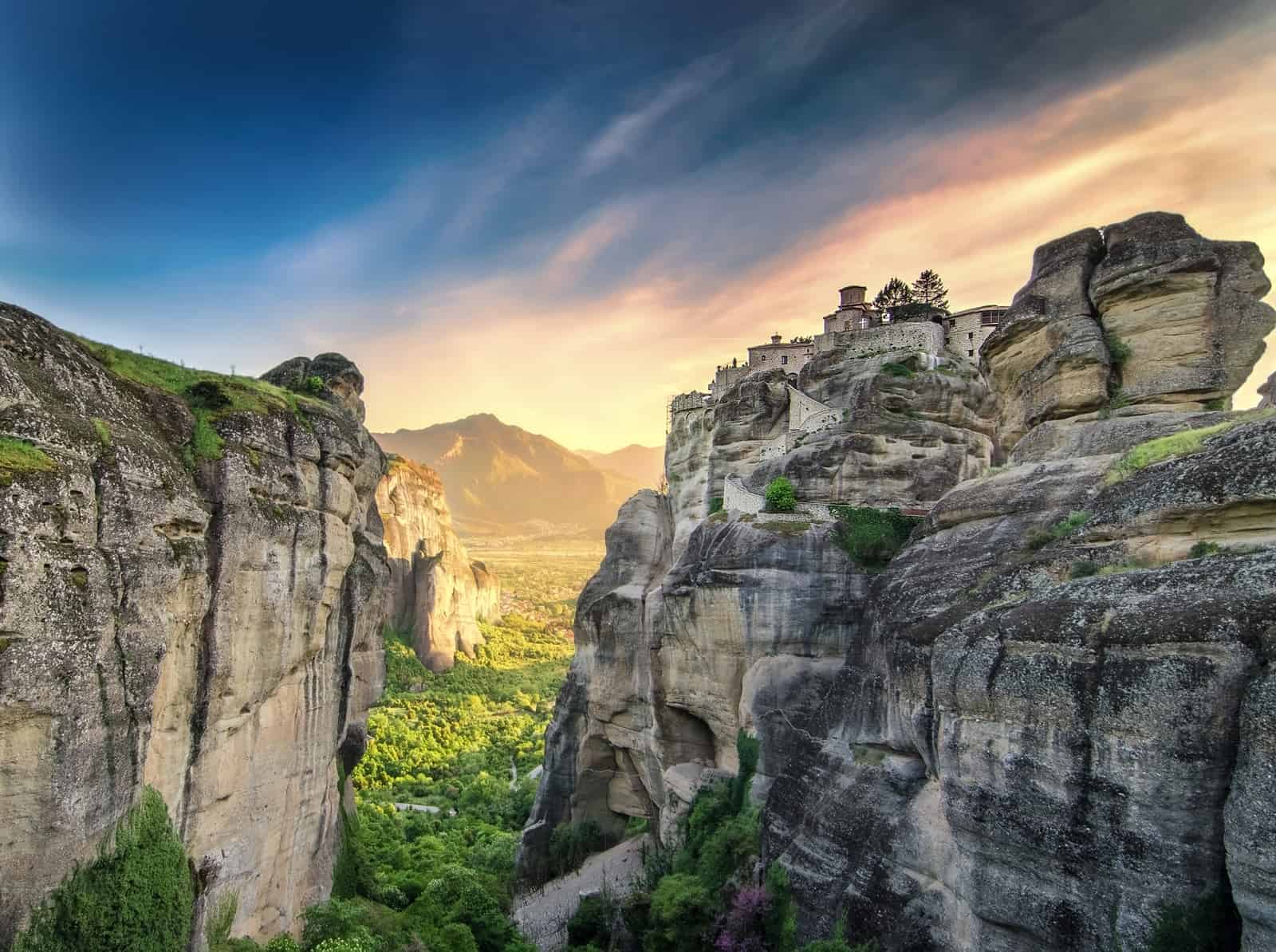Sometimes you can feel an immense inner peace just by looking at a picture.
Before I visited Meteora I had seen many breathtaking images of this mythical place that made me feel a vast serenity all through; but I never expected the experience I had when I set foot on this spiritual soil.

After the route through the plains of Thessaly, I saw the extraordinary towering gray-black rocks of Meteora standing imposingly in the mist. The word “Meteora” literally means “hovering in the air” and this is how it seems. My first thought was this place looks like cinematographic sceneries in Game of Thrones or The Lord of the Rings. I imagined the vertical cliffs like mythical creatures where spells have been thrown over them to rise their inaccessibility over the centuries.
The overwhelming rock formations of Meteora are perched above the town of Kalambaka, at a maximum height of 400 m (1200 ft). I was really curious about how they were formed and I found out that there are several theories. The prevailing theory is that a large river had his estuary in this area, which for millions of years was covered by a narrow and deep part of the sea. Thirty million years ago the water began to decline, while taking with it stacking rocks on the seabed, which over the years have been stabilised.

Some of these immense rocks feature historical monasteries, which are included in the World Heritage List of Unesco. These days, from an initial estimated number of 24, only 7 have made it through the centuries, 6 of which are open to the public (Saint Nicolaos Anapafsas, Great Meteoron, Varlaam, Roussanou, Holy Trinity and Saint Stephen). It is the largest monastic city of the country after Mount Athos, a holy place for all Christians around the world.

The area of Meteora was originally settled by monks who lived in caves within the rocks during the 11th Century. Once united, between the 14th and 16th century they were carrying construction material to the top of the rocks using ropes, nets and baskets with an excess of determination (this was also how the monasteries were reached until the nineteen twenties). They managed to create these great monasteries under these adverse conditions that make them seem more like a miracle, like God’ s will.

Ι had the impression that the monks wanted to be on the top of these cliffs to feel as close to God as possible. I can’t blame them. There is something so special and spiritual in this area, something mystical, it’s the perfect place to achieve absolute isolation, a connection with the Divine, a way to find a spiritual paradise where there is peace and harmony.
I climbed about 140 steps to reach the monasteries and to enjoy the exquisite landscape, God’s kingdom, nature in all its splendor. This magical moment when time stops and you have a sense that in such harmony and peace you can achieve anything!
*The entrance fee for all monasteries is 3 Euro per person.


